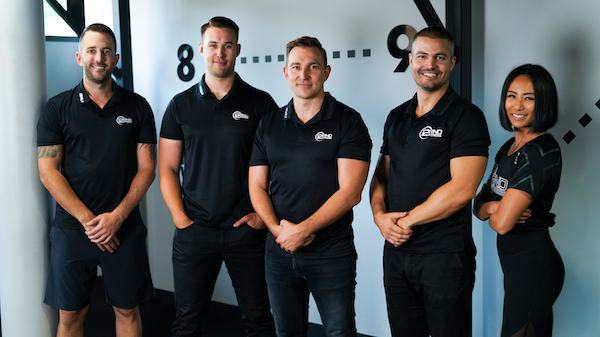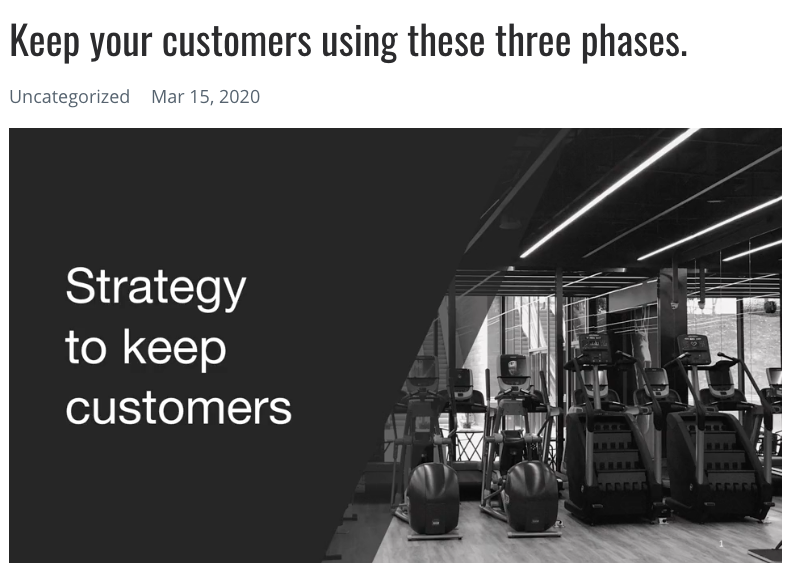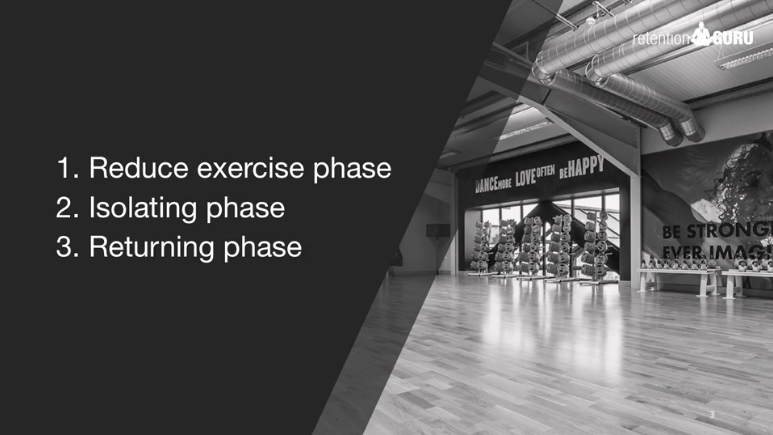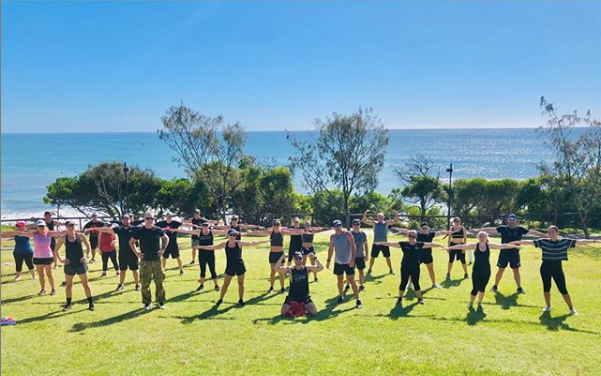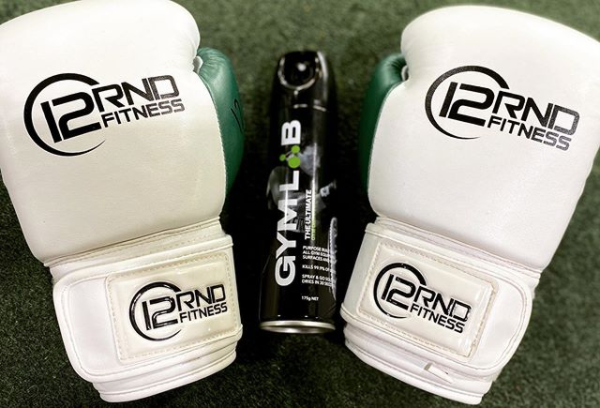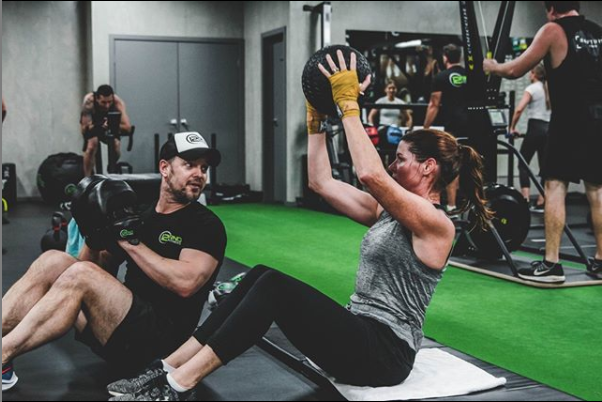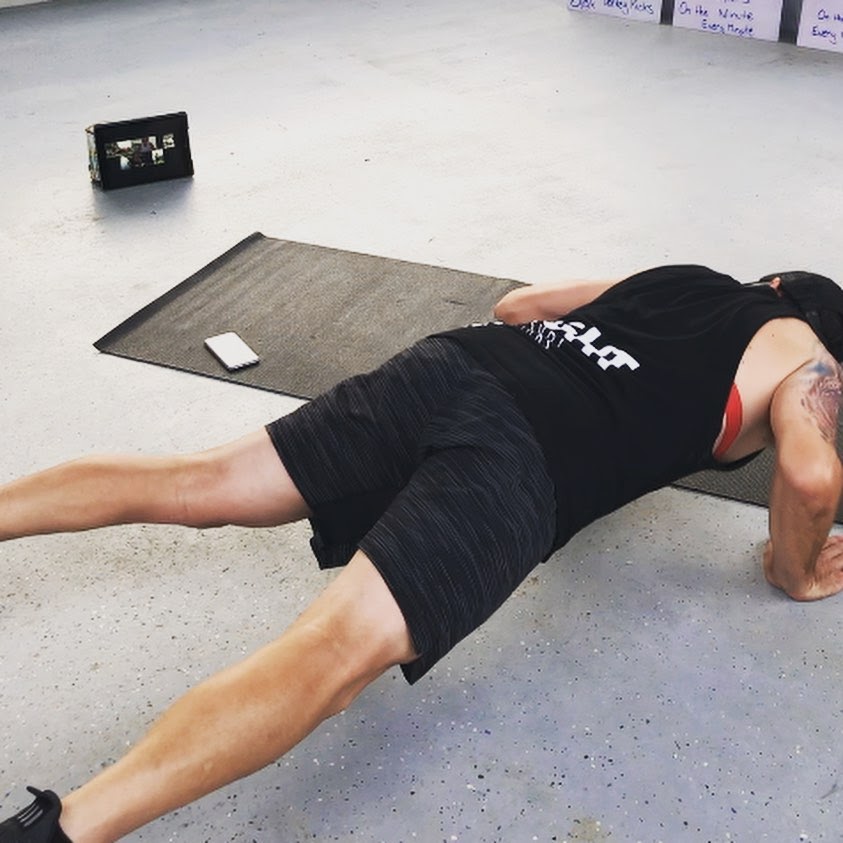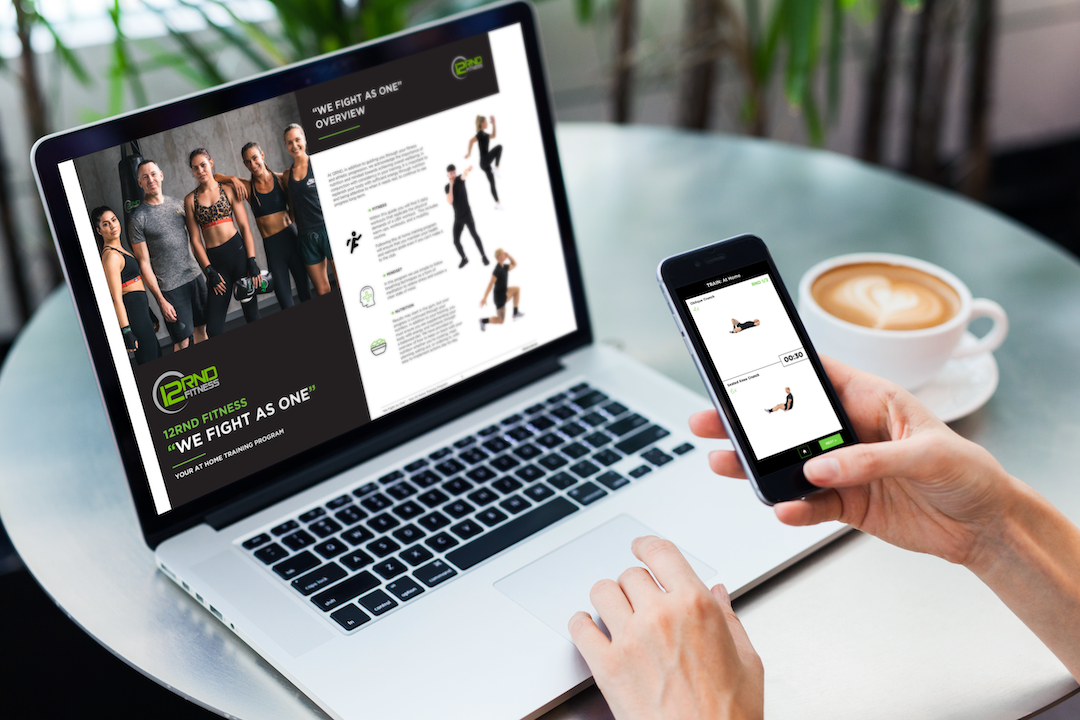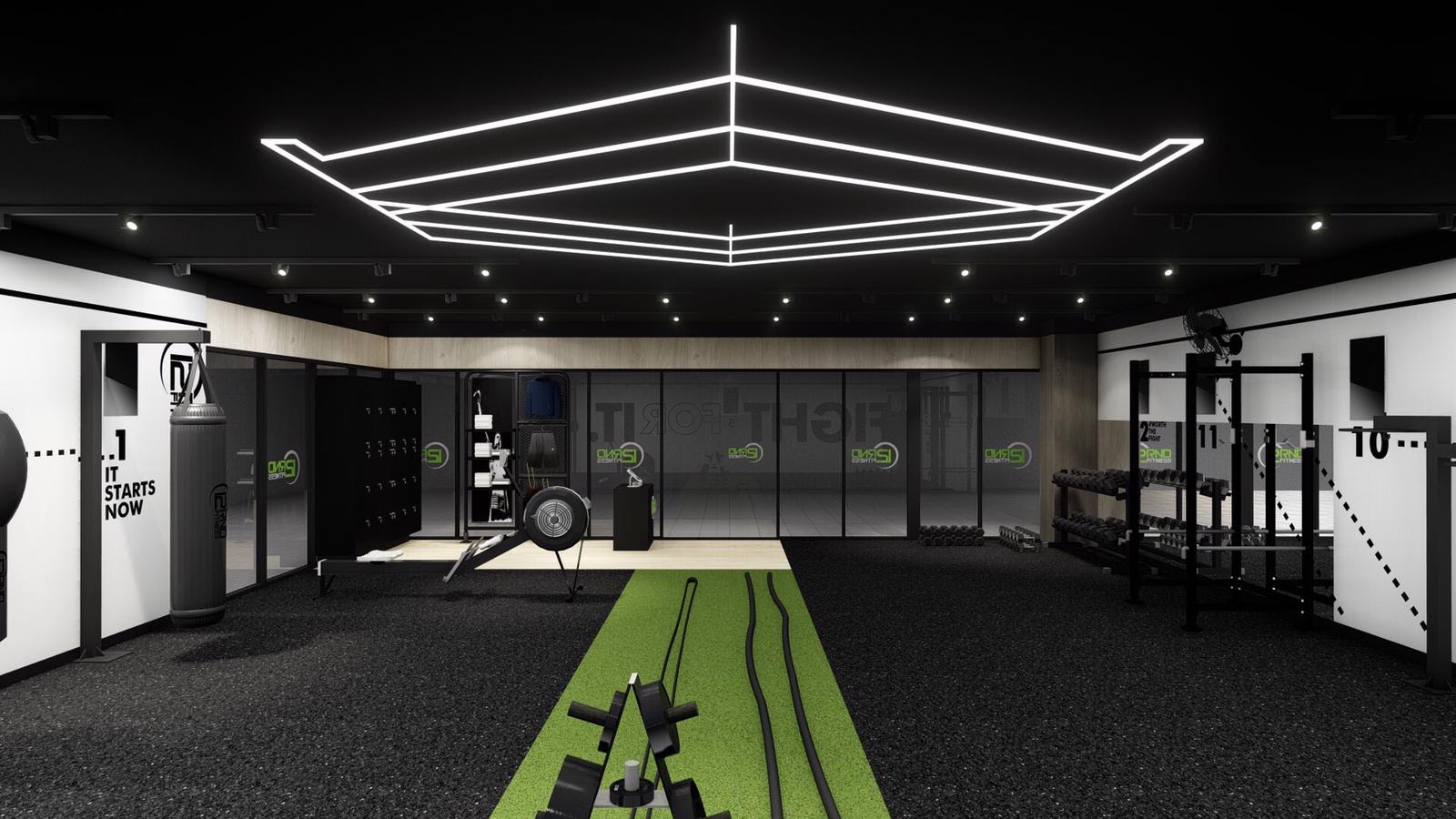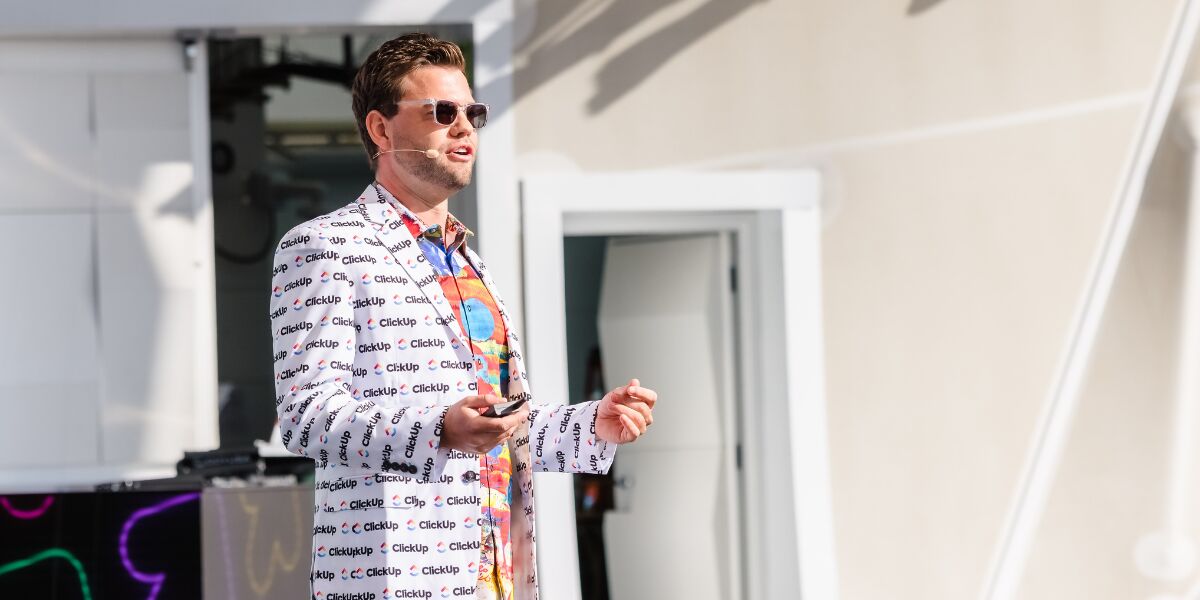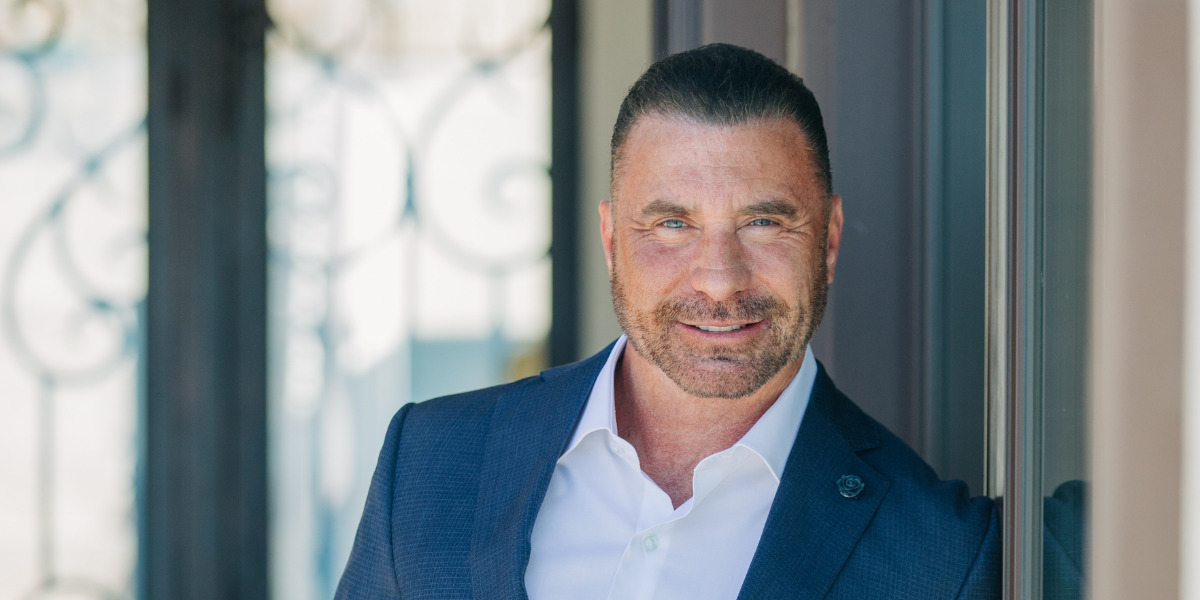Imagine experiencing exponential growth, growing from one Australian location to over 80 internationally in just three years, then having to close over 95% of those locations in just one day. We never saw it coming.
Our 12RND Fitness and UBX Training Franchise group at our 2019 Annual Summit
Covid-19 has had a major impact on many industries, and for the fitness industry it has meant forced closures globally and left many businesses in uncertainty. We were in a position as a franchisor where we needed to break through that uncertainty for the sake of our franchisees and continue pushing forward.
Just last year, on average, we opened a new club every 11 days; we expanded globally into New Zealand and Singapore, and were set to open in the UK this April. We had teams heading to the US, UK, Singapore, China, UAE and New Zealand to meet with prospective franchisees, and five new franchisees with a site ready, waiting to open their doors. Not only had this momentum ceased, but we had to find a way to help our existing franchisees keep, or at least maintain, as many of our 15,000 members as possible.
It all felt so surreal. It was all happening so fast. Adrenaline levels were high, as was the sense of responsibility. There was a lot of pressure knowing that so many people were relying on me and our team to literally help fight for their existence. There was no time to feel sorry for ourselves, or even feel scared. We just knew we had to scramble to battle stations and do what needed to get done.
We knew that as leaders, we needed to step up. And, knowing that good leaders execute with speed and accuracy, we were focused on providing the answers and the initiatives as quickly as possible, and on a regular basis.
But where did we start?
Our Executive Team: (Left to Right) Joshua Keszegi (Global Sales Manager), Jonah Hales (Chief Operations Officer), Tim West (Co-Founder and Managing Director), Michael Jordan (Chief Executive Officer), and Edrianne Javier (Head of Marketing and PR)
Formulating the Game Plan
We looked at what was happening globally, reached out to contacts in markets already affected and developed a plan. This plan was built on a three-phase framework, accompanied by a strategy that followed the sequence of global events resulting from the spread of Covid-19 we had observed, and how they would impact our business.
The first step was to decide on a framework. In order to communicate and plan effectively we knew we needed a framework that encompassed the most likely phases of the crisis. Then, with those phases established, we could clearly outline what challenges we would likely face, the information that would be required, and the necessary strategies. This is typical of most developments we embark on as a business.
Before we introduce new procedures across our franchise network, we develop a framework that maps out our implementation, and ensures a clear approach and allows us, as a team, to stick to the game plan. Most importantly, as a franchisor, we can keep our franchisees on track as well.
Given these were unchartered waters, we looked to experts in our industry and the broader economy to get a feel for what was coming. We needed a framework that was logical and easily understood, flexible enough to adapt to changing circumstances yet specific enough to know when to transition from one phase to the next. Then, we found this video from Dr Paul Bedford of Retention Guru who had developed a three-phase model based on the Covid-19 pandemic as applicable to the fitness industry.
Based on what Dr Bedford outlined, we tweaked the framework to suit our business specifically. We knew our business would need to adapt to government policies and social expectations, then our members would be required to isolate if the crisis worsened, in which case we would need a plan to reactivate our business once it passed.
So, our phases became: Adaptation, Isolation and Reactivation.
Once we had our framework in place, our next task was to outline a strategy. There was an immediate need to look at our communications and operations. How could we ensure that we were remaining sensitive to the global climate, and at the same time continue to instill trust in both our customers and our franchisees? Also, where could we cut costs and continue forward effectively, yet efficiently?
This meant breaking down the phases to create a clear narrative for the communication to members and franchisees while also inspiring confidence. We needed to provide a proactive strategy for franchisees to action.
To do this, we thought about the needs of both the member and the franchisee and how we could meet them quickly. We began to look at what we had under development that could be repurposed, and what resources could be re-allocated to develop immediate solutions.
This is an important exercise we look to do anytime we innovate. What do we have at our disposal? We brainstorm as a team and find the most efficient way forward. This was even more crucial as we embarked on addressing the crisis at hand.
To ensure that we always have a good understanding of the moving parts of our business at any point in time, we plan all developments through an annual roadmap. This roadmap includes all the developments we plan to deliver over a calendar year, how far developed they are and what resources they need to complete.
This has always been pivotal to our ongoing growth to ensure that we continue to innovate at the same rate that we expand.
Without this road map it would be harder to see the big picture, allocate resources and limit “scope creep,” which is when you are continually at risk of expanding the scope of a project because you keep thinking of what else you can add on throughout the process. On one single page we can see the priorities of each department and the innovation pipeline which is critical to driving momentum.
It was very clear that a lockdown was inevitable. So, we looked at elements of the brick and mortar offering that could be translated to a digital offering. We identified suitable technology elements on our road map to piece together the solutions.
Fortunately, pre-Covid-19 we were already in the process of developing a suite of “smart club” solutions to improve the efficiency of the clubs. This included developments such as interactive screen technology, video content, member apps, and a performance hub for franchisees. We were able to repurpose many of these elements to quickly put together our new training app and create a central communication platform to get information to our franchisees quickly.
With a clearer vision of how we could pull this off, what would be involved, and a timeline of implementation that we could quickly pivot to suit changing government mandates, we began our first phase—the Adaptation Phase.
Phase 1: Adaptation
The Adaptation Phase involved adapting our operations to suit the changing government restrictions, adapting our communications strategy to keep our community informed, and leaning on suppliers to adapt their services to suit our changing circumstances.
This phase began as soon as the first social distancing restrictions were handed down.
We understood that members would be concerned about hygiene, and so we diligently prepared our franchisees with solutions to implement: we changed the workouts, and we reduced the number of members that could train at any one time. However, as soon as we implemented these changes, we were already planning for the next.
As we hesitantly anticipated, within a week, our clubs were closed but we could still run Outdoor Bootcamps, and so we did. Meanwhile, we fast tracked the release of our training app so that members had access to our workouts from home.
Throughout every change, we looked to our suppliers for expert advice in their relevant fields, and for financial relief or technical support under the circumstances.
Our legal team provided advice on the changes to legislation, clarity on what was or wasn’t permitted and interpreted laws and new legislation.
Our accounting partners simplified information on the government’s stimulus packages and initiatives to ensure we didn’t miss out, we received insurance advice, reductions to subscriptions and renegotiated deals.
Moments like this, we really felt the importance of establishing strong relationships with trusted and reliable suppliers. We set out to do absolutely anything that we could to lengthen the runway for franchisees’ businesses and passed these updates onto them in real time. And with the help of our suppliers, we could continue adding further support wherever possible to our franchisees under the circumstances.
Although our franchisees could continue running and servicing members with these adaptations, we still needed to address the club closures.
A big part of what our members pay for is access to our facilities, and the value that comes with that such as equipment, social interaction and face-to-face coach guidance. Without that club environment, would we truly be fulfilling the expected value of their membership fee?
An Unforeseen Industry-Wide Drama
Beyond all of the obvious effects club closures would have on our business, such as the immediate drop in active members and revenue, there was one unexpected issue that impacted many of our competitors and led to them losing thousands of members in an instant.
The issue was so simple yet so destructive. The Australian Consumer Law prohibits businesses from taking payments for goods or services when there are reasonable grounds to believe the services won’t be supplied.
Our clubs were closed, therefore we could no longer provide training to our members in the same way we did before. And, in a knee-jerk reaction, many payment processing companies cancelled all direct debits agreements immediately, resulting in the businesses who rely on their services losing all payment information for their customers along with the authority to process payments in future.
This was a HUGE problem.
This meant that upon reopening their business, they would need to set each member up with a new membership, rather than simply reactivating their existing one. Essentially, once you terminate a recurring payment at the payment processor level you couldn’t just turn this on again without written approval from the member.
This would be critical to our franchisees. We needed to ensure that they were in a position to receive immediate revenue as soon as business could resume as normal.
In a previous life I had developed a fintech business that processed payments for fitness businesses, and so I intimately understood that our own provider would see risk in processing payments during this time. In the uncertainty of whether the businesses they service may or may not reopen, naturally they were inclined to terminate existing agreements (as I would have done in their shoes).
Unlike other providers that were going into effective hibernation to see the crisis out, our plan would allow us to continue to trade with a modified digital offer and so I knew we would need these merchant facilities to stay active to process payments. So, I proactively reached out to negotiate the terms immediately.
Approaching these kinds of negotiations doesn’t have to be complicated, messy or stressful as long as you identify the crux of the problem and offer an alternative solution that addresses the key needs of all stakeholders in the most straightforward way possible. In this circumstance, I was able to identify the risk to the supplier, consider what actions they would realistically implement to absolve that risk and propose an alternative plan that would meet the needs of both the supplier and our network.
In this case, that solution was to place a mass hold on all memberships using our Member Management System (MMS) to immediately pause all payments indefinitely. This action meant that no “debit requests” were being made against the customer accounts stored with the billing provider, hence negating the risk to the billing provider altogether. In our favor was the ability to completely control when the billing was restarted and the flow of funds restored. Thankfully, we also have strong relationships with our MMS provider and could initiate this quickly to meet the guarantee made.
One hurdle completed… one of many to come.
Then it happened – no more Outdoor Bootcamps, and it was time to adapt once again.
Phase 2: Isolation. How to Get More Than 80 Franchisees Online
After a late Sunday night Prime Minister address, we had to close all of our Australian clubs with fewer than 24 hours notice. It was hard to catch our breath with how quickly the situation was changing and impacting our business. Our team was working overtime. Our franchisees were understandably beginning to panic. Our members were confused and concerned. What was going on? And what would happen next?
We entered our “Isolation” Phase.
The Isolation Phase had been in development the moment there was a whisper of our clubs having to close. We had already begun to fast-forward any tech projects that had been sitting on our road map that could provide value in continuing to service members without our club environment. Now, we needed to figure out how to carry out that transition while maintaining as much of our membership base as possible.
But, we knew that we weren’t alone. Our competitors were facing these same challenges. Every single fitness provider closed. All of our members would be searching for an at-home alternative for their training. So, why not keep them enjoying the same workout they know and love with us?
The primary goal was to target the “low-hanging fruit”, our existing members who wanted to continue their training. We wanted to reactivate members who were automatically put on suspension after club closures and transition them on to a digital membership, while also targeting historic leads and members who at some point showed an interest in our product and perhaps now need a training solution in isolation.
Our team hustled hard to deliver a brand new ebook and fitness app to equip our franchisees with a high-value offering that would encourage members to maintain their paid membership, or at least part of it.
We continued building on this solution by providing a framework for delivering live daily workouts via video conferencing platforms, such as Zoom, and keeping members motivated and accountable through the use of a digital member tracker and one-on-one coaching calls.
The support we provided included call scripts, email templates, and step-by-step instructions on how to use various platforms to implement this solution because we knew we needed to provide both the strategy and the tools to execute.
The approach was to proactively consider any possible gaps in information that may result in uncertainty for franchisees where they would require support, and preemptively develop a resource that addressed it.
Similar to Elon Musk’s approach of solving problems, we, as a team, constantly challenge each other to justify our work. Not in a criticizing way, but in a constructive way that productively pushes one another to ensure that whatever we produce has a purpose, and we can always identify ways to be more efficient, concise and “user-friendly” for our franchisees.
In this instance, that meant every time we set out to provide an additional service offering within our digital solution, we considered elements such as:
- How will franchisees teach their members how to use it?
- Do our franchisees have the capacity to implement this offering?
- What does the workflow look like?
- What guidance do they need to implement effectively?
Most importantly, we always ask, “Is it necessary?” and “What value does it provide?” This ensures everything we do contributes back to our initial strategy and towards our overarching goals.
After the process and operations were established and handed down to our franchisees, we needed to consider marketing and how we will let our audience know that we have made this transition. We had already identified that we would rely on our existing database as our primary market, but we needed to consider how those consumers’ behaviors may have shifted.
Reconnecting with our Audience
Once clubs had closed and boot camps were ceased, we were left with “active members” who had continued paying a membership in exchange for our adapted digital services, and “inactive members” whose membership had been suspended during our bulk membership holds and had not chosen to reactivate for whatever reason.
However, now that our franchisees were fully equipped with a high-value solution to keep members on an active membership, we needed to also find ways to support our inactive members. How would we keep them engaged? How do we ensure that when we reopen, they are excited to restart their training? And on top of that, now that we have a product, how can we tap into additional markets and continue generating leads and revenue?
We started with developing a high-impact and concise marketing strategy that encapsulated all of our new products and services. The “12RND At Home Training Pack” was born. Simple, effective, and communicates immense value.
Rather than having to highlight each individual aspect at a time, we developed social media content, email marketing, call scripts and other digital graphics that outlined everything included in our pack to emphasize value and excitement with what you receive when you get started.
Having established this pack, we knew that we could begin marketing its value to new markets of people who may be in isolation, and whose gym or usual fitness provider may not be able to fulfill their fitness needs at home.
Confident that the additional elements we had developed within the pack fulfilled the expected value of the digital membership, we decided that we would activate a goodwill campaign and make our new ebook available for free to everyone.
We knew that once our members and franchisees were taken care of that we had the opportunity to extend some of the value we had created to the wider community who we knew would appreciate the content.
With a plan in place, a solution implemented and government mandates beginning to slow down, we found ourselves coming up for air and we wanted to begin looking forward.
We were no longer in those initial stages of having to be so intensely reactive every hour of every day. We, as a team, just like many others now working from home or self-isolating, started to settle into our “new normal.”
We took this opportunity to prepare our business for a comeback.
Phase 3: Reactivation. Preparing to Come Back Stronger Than Ever
Rather than getting caught up in the setbacks we faced, or allowing ourselves to become complacent with the digital solution we had developed, we knew this was a time to emerge on the other side stronger than ever before. Times like these are the perfect opportunity for wholesale innovation.
We were past the point of reacting and now had the time to take decisive action to grow and get ahead.
We felt like we’d been given an opportunity to reimagine our business, explore new revenue models, improve efficiency, and unite the franchise group through shared adversity.
We had fast-tracked our business model evolution, and were forced to test new ideas—some of which we may not have had the courage to test.
Now, how would we continue this momentum for the foreseeable future while there was still so much uncertainty around when our clubs would reopen?
We very much expect that reactivation will unfold through the same sequence of events in which we found ourselves entering isolation but with longer transition periods, and so we now have the opportunity to make each of our initiatives even better.
We are finding ourselves back at the drawing board looking to enhance the entire process in any way possible. And not only processes that were established as a result of the crisis, but even our existing operations. What can we do to improve our brick-and-mortar business, adapt to the new norm and future proof?
With forced closures, cheap money and government stimulus available for many businesses, it’s an opportunity for us to review our fitout and setup, and potentially introduce new equipment and further technology to fast-track our “smart club” progress.
We also now have a completely new service offering that we can continue to provide. Our digital solution will allow us to reach audiences in areas where we don’t yet have a physical presence, and provide an alternative membership solution for those experiencing dramatic changes to their financial situation and lifestyles.
Notwithstanding many economic, social and competitive factors, we believe on balance there will be a greater demand for fitness coming out of isolation, for those who may not have been able to stay on top of their progress while away from the gym, lost their fitness provider due to business closure, or find they have a newfound motivation once restrictions are lifted and greater freedom returns.
Essentially, we are not slowing down.
Adversity is almost always accompanied by opportunity so it’s important to get comfortable with being uncomfortable. Celebrate your wins, learn from your failures and move on.
No one expected that in 2020, the entire world would be forced into lockdown due to a pandemic. But many businesses have pivoted, stayed relevant and continued to offer value to their consumers, which means that we can expect a huge surge in innovation as a result.
If you have been sitting on an idea you now have a great opportunity to re-think it and adapt it to the post Covid-19 world, ask yourself: “What did the established businesses in the same markets as yours do to adapt?” “How successful were they at it?” And, “Could you do it better if you were designing the solution from scratch?”
This is a great opportunity to create new markets or take market share from incumbents so use this research and make the most of this opportunity to rebuild or redesign your business.
Put yourself in your prospective buyer/customer’s shoes and consider if your offer gives them real tangible value and how you can continue to build on that value over time.
Most importantly, keep moving forward, act quickly and decisively, and intentionally foster a culture of innovation so that when the unexpected happens you have the ability to adapt.
If you want to know more about my background, what led me to start 12RND Fitness, or even have any ideas or thoughts on our framework and approach, just comment below.


